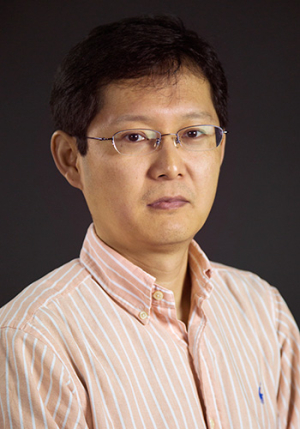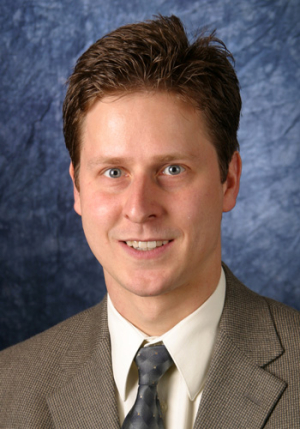It sounds like the setup to a bad joke: How many engineers does it take to boil water? Actually, to do so as efficiently as possible, it takes two (plus their research teams).
The two in question are Dong Liu and Paul Ruchhoeft, assistant professor of mechanical engineering and associate professor of electrical and computer engineering, respectively, with the University of Houston Cullen College of Engineering. The pair recently won a $300,000 National Science Foundation (NSF) grant to develop a highly efficient pool boiling technology that can be used in cooling systems for industrial, energy and other applications.
As opposed to flow boiling, where water travels through a channel, pool boiling has no forced flow. Make spaghetti on the stove and you’re using a pool boiling system.
Since the process of boiling heat transfer, which exploits the phase change from liquid to vapor, is an excellent way to transfer heat out of an energy system, pool boiling has been used as a cooling method in a variety of applications, from nuclear power generation to thermal management of electronics.
Excellent does not equal perfectly efficient, though. As Liu describes it, there are three main areas where the boiling process can be modified to improve pool boiling’s ability to remove heat from a system.
The first is the initiation of boiling itself. "There’s an energy barrier that you have to overcome to enact the phase change (from liquid to vapor)," said Liu. "You want to lower that energy barrier so that the more efficient boiling heat transfer mechanism, as compared to single-phase liquid cooling, can kick in as soon as possible."
The second results from this change from liquid to vapor. If boiling becomes too active or violent, the bubbles forming on the boiling surface can agglomerate and coalesce, creating a layer of vapor that prevents the liquid from wetting the heating surface. Dryout of the surface not only deteriorates the effectiveness of boiling heat transfer, but can also cause a catastrophic temperature rise in the surface itself. In past pool boiling studies, in fact, dryout has literally burned stainless steel surfaces during the so-called critical heat flux (CHF) stage.
The third area involves the intermediate stage between the initiation of boiling and CHF. During this period, the boiling process should be modified in order to transfer as much heat as possible without incurring a significant temperature rise in the boiling chamber, which will effectively improve boiling heat transfer while lengthening the boiling process.
The way to address all three of these issues, said Liu, is by adjusting wettability – literally the ability to get and stay wet – of the boiling chamber’s surface, where heat is applied. This change, though, can’t be static or uniform.
To speed the initiation of boiling, the surface should be hydrophobic, or repellant to water, which would encourage bubbles to form more quickly. During violent boiling, though, the surface should be hydrophilic, or attract water, to facilitate rewetting of the boiling surface. In the middle phase, the surface’s wetting property should be more hydrophilic than hydrophobic, to allow for the best transfer of heat.
Other research has attempted to improve pool boiling heat transfer by structurally modifying the boiling chamber’s surface itself, making some parts hydrophobic and the rest hydrophilic. While this approach helps, said Liu, it is limited in that it treats boiling as a spatial process instead of the time-dependent process that it actually is.
"Instead," he said, "we want to generate a surface that is tunable and can adapt to the varying boiling conditions."
To achieve this, Liu and Ruchhoeft are relying on an effect known as electrowetting. In essence, by applying an electric field to the surface of the boiling chamber, its wettability can be adjusted between hydrophobicity and hydrophilicity.
According to Liu, electrowetting is typically used to manipulate liquid droplets in microfluidic studies. This research, though, will exploit the ability of electrowetting to control vapor bubbles that form during the boiling process, which is much less understood.
Once they have a better grasp of this capability, the two will then work to optimize the technology, particularly, to determine what properties the electric fields applied at different points in the boiling process should possess (such as waveform, frequency, and magnitude), as well as the best way to manufacture the tunable, adaptive boiling surfaces.
"The first goal of this project is to study the science," said Liu. "This is probably the first time anyone has used electrowetting to enhance pool boiling. Once we understand the process, we’ll work to make it more practical. How do we design the electrical circuit and how do we optimize the control and manufacturing processes? If we can figure those things out, we should see big gains in the efficiency of energy systems that employ pool boiling as the primary means of thermal energy transport."

